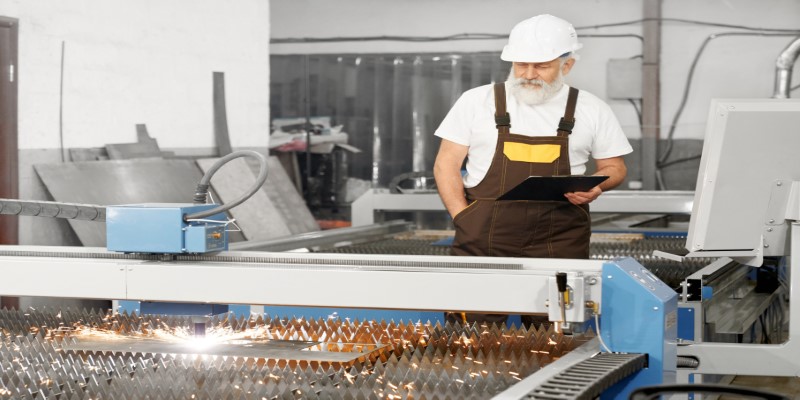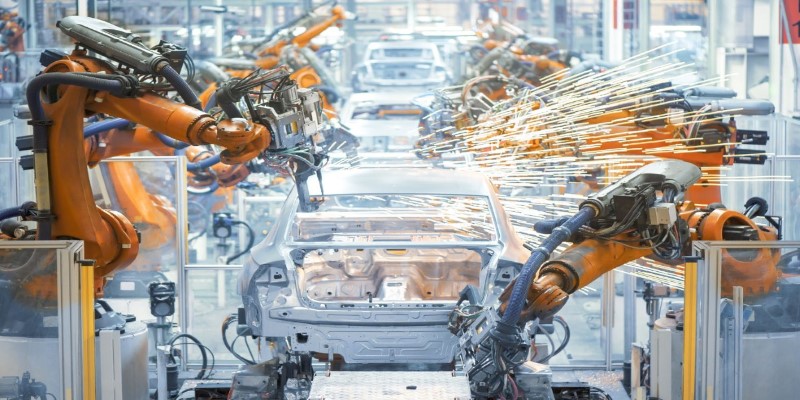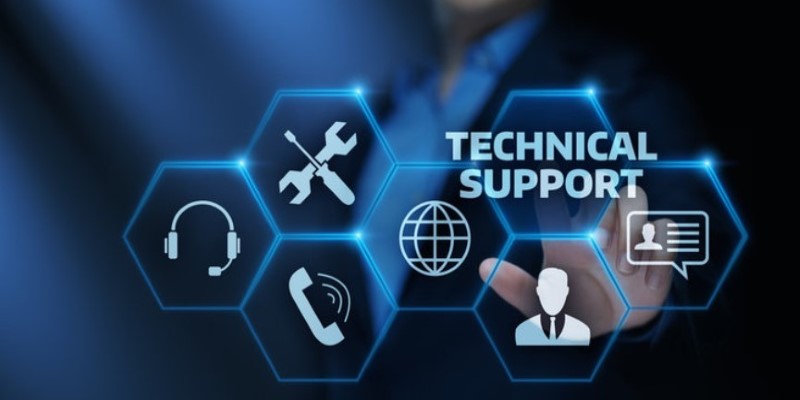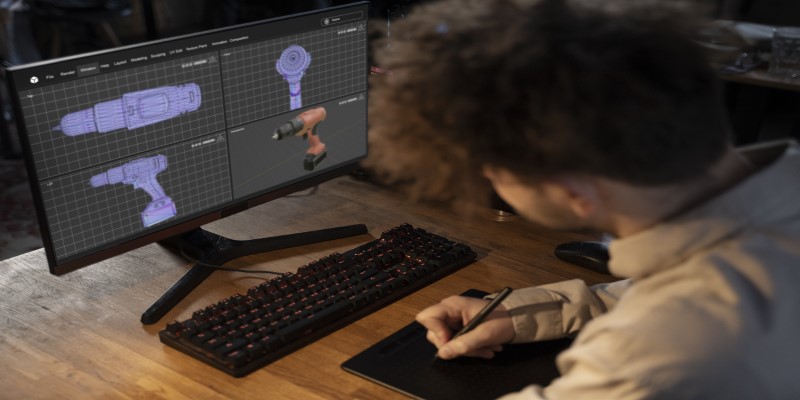Boost Your Business Efficiency with Advanced Industrial Machinery
In 2024, the industrial landscape is rapidly evolving, with technology taking center stage in driving business efficiency and innovation. As businesses seek to stay competitive, investing in cutting-edge industrial machines has become more crucial than ever.

These advanced machines streamline operations and offer significant improvements in productivity, safety, and cost-effectiveness. This article explores how modern industrial machines can empower your business, highlighting the latest trends and advancements that can transform your operations.
The Role of Cutting-Edge Industrial Machines in Modern Business
Industrial machines have always played a pivotal role in manufacturing and production. However, the latest technological advancements have revolutionized them, making them more intelligent, efficient, and adaptable. Cutting-edge industrial machines are equipped with sophisticated sensors, automation capabilities, and AI-driven controls that allow for real-time monitoring and adjustments. This level of precision and control is crucial in today's fast-paced market, where even minor inefficiencies can lead to significant losses.
These machines are not just about performing tasks faster; they are about doing them smarter. For instance, predictive maintenance, powered by AI, helps anticipate machine failures before they happen, reducing downtime and maintenance costs. Similarly, automated quality control ensures that products meet the highest standards with minimal human intervention. By integrating these technologies into your operations, you can achieve a level of efficiency and consistency that was previously unimaginable.
Key Trends in Industrial Machinery for 2024
As we look ahead to 2024, several key trends are shaping the future of industrial machinery. One of the most prominent trends is the integration of artificial intelligence and machine learning. These technologies are enabling machines to learn from their operations, continuously improving their performance and adapting to changing conditions. For example, AI-driven machines can optimize production schedules based on real-time data, ensuring maximum efficiency.

Another significant trend is the move towards sustainable manufacturing. With increasing pressure to reduce environmental impact, businesses are turning to machines that are more energy-efficient and produce less waste. Innovations in materials science are also leading to the development of machines that are more durable and require less maintenance, further reducing their environmental footprint.
The rise of Industry 4.0 is another trend that is transforming industrial machinery. This concept involves the use of interconnected machines and systems that communicate with each other to optimize production processes. By leveraging the Internet of Things (IoT), businesses can gain real-time insights into their operations, allowing for more informed decision-making and faster response times.
Benefits and Drawbacks of Adopting Advanced Industrial Machinery
Adopting advanced industrial machinery can revolutionize your business, but it's essential to understand its benefits and potential challenges.
Benefits of Adopting Advanced Industrial Machinery
Increased Productivity: One of the most significant benefits of adopting advanced industrial machinery is the potential for increased productivity. Modern machines are designed to operate at higher speeds and with greater precision, allowing businesses to produce more in less time.
Improved Quality and Consistency: Advanced industrial machinery often incorporates automation and AI-driven controls, which ensure consistent quality in production processes. Automated systems can maintain tight tolerances and perform repetitive tasks with minimal error, leading to higher-quality products.
Enhanced Safety: The latest industrial machines are designed with safety in mind, incorporating features such as robotic automation, sensors, and safety interlocks. These technologies reduce the need for human intervention in dangerous tasks, minimizing the risk of workplace accidents. By improving safety, businesses can protect their workforce and reduce the costs associated with accidents and insurance.
Cost Savings: Although the initial investment in advanced industrial machinery can be significant, the long-term cost savings can outweigh these expenses. Modern machines often consume less energy, produce less waste, and require fewer labor hours to operate.
Drawbacks of Adopting Advanced Industrial Machinery
High Initial Investment: The most significant drawback of adopting advanced industrial machinery is the upfront cost. High-tech machines often require a substantial investment, which can be a barrier for small and medium-sized enterprises (SMEs). The financial burden of purchasing and installing new equipment can strain budgets and impact cash flow.
Integration Challenges: Integrating advanced machinery with existing systems and processes can be complex and time-consuming. Legacy equipment and outdated infrastructure may not be compatible with new technologies, requiring additional investments in upgrades or replacements. Integration challenges can lead to operational disruptions during the transition period.
Training Requirements: Advanced industrial machinery often requires specialized knowledge and skills to operate and maintain. Employees may need extensive training to use new equipment effectively, which can be costly and time-consuming.
Maintenance and Technical Support: While modern machines are often designed for durability, they still require regular maintenance and technical support. Advanced technologies may involve complex systems that are difficult to troubleshoot without specialized expertise.

Practical Applications of Modern Industrial Machines
The practical applications of cutting-edge industrial machines are vast and varied, spanning multiple industries. In manufacturing, these machines are being used to automate complex assembly processes, reducing the need for manual labor and increasing precision. For example, robotic arms equipped with AI can assemble intricate components with a level of accuracy that is difficult for humans to achieve. This is particularly beneficial in industries such as automotive and electronics, where precision is paramount.
In the logistics sector, advanced industrial machines are revolutionizing the way goods are stored and transported. Automated guided vehicles (AGVs) and drones are being used to move products within warehouses, reducing the time and labor required for these tasks. These machines are also equipped with sensors and AI that allow them to navigate complex environments and avoid obstacles, ensuring smooth and efficient operations.
The food and beverage industry is another sector where cutting-edge machines are making a significant impact. From automated packaging systems to precision food processing equipment, these machines are helping businesses meet the growing demand for high-quality products while maintaining strict hygiene standards.
Conclusion
In 2024, cutting-edge industrial machines are more than just toolsthey are strategic assets that can empower your business to achieve new levels of efficiency, safety, and innovation. By embracing the latest advancements in technology, you can transform your operations, reduce costs, and stay ahead of the competition.
However, it's essential to approach this transition with careful planning, considering factors such as cost, integration, and training. As the industrial landscape continues to evolve, businesses that invest in the right technologies today will be well-positioned for success in the years to come.
On this page
The Role of Cutting-Edge Industrial Machines in Modern Business Key Trends in Industrial Machinery for 2024 Benefits and Drawbacks of Adopting Advanced Industrial Machinery Benefits of Adopting Advanced Industrial Machinery Drawbacks of Adopting Advanced Industrial Machinery Practical Applications of Modern Industrial Machines ConclusionRelated Articles

A Simple Guide to What You Don't Know About the Price of Villas in Dubai
By - Rick Novak
Apr 03, 2024

Repossessed Car Buying Guide for Seniors: Save Big on Your Next Vehicle
By - Kelly Walker
Sep 04, 2024

Cybersecurity Masters Programs and Marketing Automation Tools in 2024
By - Kelly Walker
Sep 06, 2024

Navigating the Best Animation Courses: A Pathway for Aspiring Animators
By - Rick Novak
Sep 05, 2024

Your May 2024 Guide to Economical Rent-to-Own Homes in the U.S
By - Rick Novak
Sep 05, 2024

Smart Investment: Buying Cheap Apartments in Dubai for Americans in 2024
By - Kelly Walker
Sep 06, 2024

A Guide to Affordable Prefab Homes for Seniors: Smart Living Solutions for 2024
By - Rick Novak
Sep 05, 2024

Why Big Banks Are Offering Unprecedented CD Interest Rates in 2024
By - Kelly Walker
Sep 05, 2024

The All-New Mazda CX-5: Jaw-Dropping and Out of Words Surprise!
By - Rick Novak
Apr 05, 2024

Plaque Psoriasis Uncovered: A Comprehensive Guide
By - Rick Novak
Sep 04, 2024

Finding the Best Possible Treatments for Symptoms of Knee Pain
By - Rick Novak
Apr 03, 2024

Free Internet Access for Seniors: Where to Find It Near You
By - Rick Novak
Sep 04, 2024
